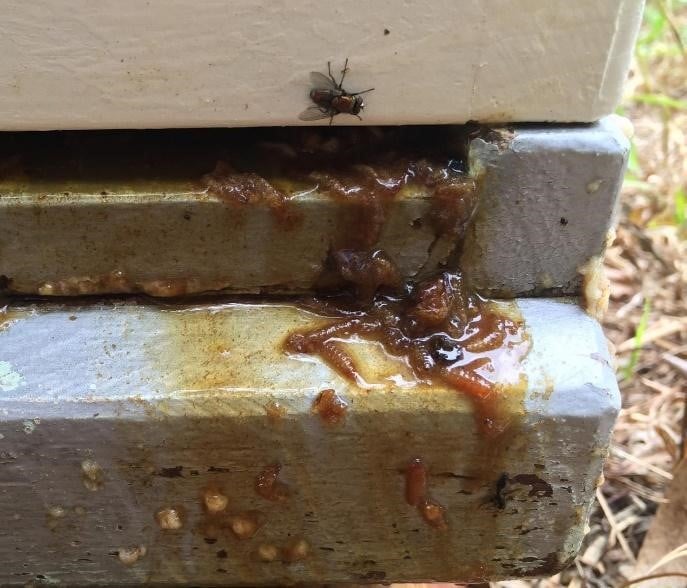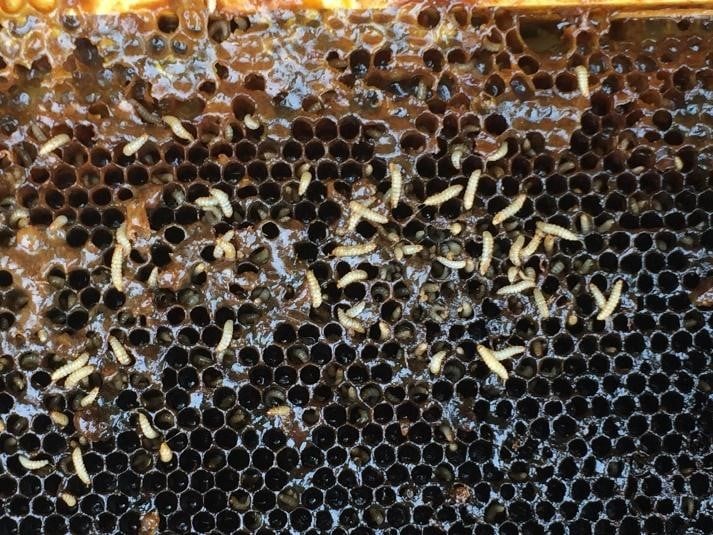Small hive beetle (SHB) is a pest that causes issues in many parts of Australia. In some cases, SHB can contaminate honey with Kodamaea yeast, causing the honey to ferment and ‘slime-out’, making the resulting honey not fit for consumption.
As a slimed-out beehive is often a horrible mess and potentially harmful to our health; many beekeepers do not examine the frames. In their eyes “hive beetles killed my beehive” and the story basically stops there. Unfortunately, this mishandling of the equipment often fuels the later re-emergence of American foulbrood (AFB) infections. Any colony that has experienced AFB is a biosecurity risk and so if you cannot 100% identify what killed your hive then treat it like it has AFB.

What happened within this hive before the beetles took control is unknown, was it robbed and did it have AFB?

Slimed out brood comb, if you cannot 100% confirm it was a “clean” hive then assume it was AFB.
What to do if you have a slime-out
Equipment
The best thing to do is immediately block it up/bag it, freeze it to kill all stages of SHB inside it and then decide if you will burn the lot or irradiate and clean up the mess later. It is often actually more cost effective to burn most of the frames and only keep the good wood gear.
For some beekeepers it is normal to just “clean up” all the dead-outs each time they go to the site (often slime-out or full of wax moth), which indicates that they are not on top of managing their hives. They are allowing the equipment and frames to be contaminated (which costs money to rehabilitate or replace), making it harder to identify the actual cause of hive demise and encouraging SHB and AFB growth.
Prevention
Training your beekeepers to better manage weak colonies is probably a good start. Reducing the hive per beekeeper ratio will allow hives to be worked more frequently. This improves the general consistency and strength of each colony, which is often more profitable as honey production per hive increases.
Therefore, make it a priority to do a MINIMUM of two full brood checks each season, manage your queens (don’t keep them any longer than you should), train your beekeepers, manage weak hives and keep on top of your beetle numbers. That makes a lot more dollars and sense than being one step behind on your beekeeping all the time.
Acknowledgements:
- This article has been shortened and was originally published for ‘The Australasian Beekeeper, 123.3, September 2021 edition under the title ‘Managing hives to minimise damage from small hive beetle.’
- This article was peer-reviewed by Nadine Chapman and Erica Mo.

